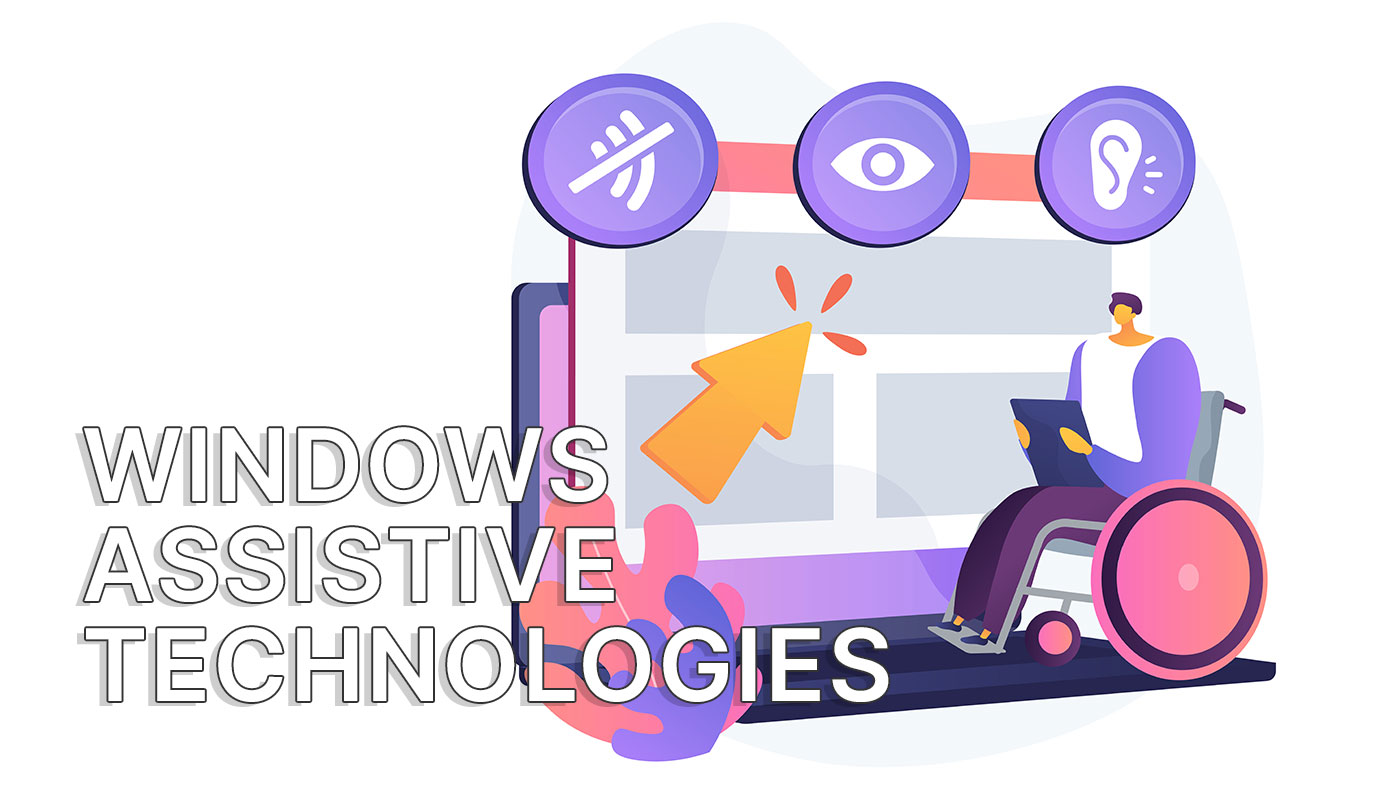Windows is an operating system which takes accessibility seriously thanks to Microsoft’s commitment to make their operating system easy to use for people with any degree of disability.
Windows is packed with assistive technologies spread into three main categories: vision, hearing, and interaction. Here on BinaryFork we have put in place guides that explain all the important assistive technologies that make Windows easier to use by anyone, not just people with disabilities.
Windows includes tons of assistive technologies which are disabled by default. Most of the options are grouped in the Accessibility section of the new settings app. There are also a few remains from previous editions of Windows, which will be modernized or phased out in the near future.

Vision
Increasing text size, changing the mouse pointer appearance, magnifier, color filters, narrator, and contrast themes.
If you struggle with reading a web page use the Immersive Reader available in Edge, Word, Outlook, and OneNote. This utility changes the way a webpage is displayed, and can also read aloud the contents via text-to-speech.
For something that can read anything, not just your browser webpages use the Windows Narrator utility. It works with every app installed on your system.
Meed to zoom in on specific details? The Windows Magnifier utility lets you zoom selectively on anything that’s displayed on screen.
For changing the size of elements permanently there are three ways you can make things bigger in Windows.
If you only want to make the mouse cursor bigger there are options that only affect the pointer. Here’s how to highlight the mouse cursor only when you can’t spot it on your big monitor. Or maybe you just want to make the mouse cursor bigger.
If you type a lot you’ll be pleased to find out there are ways to make the text cursor stand out.
One of the easy ways to make the screen contents legible is to switch to a High Contrast Windows theme.
Sometimes it’s not enough to use large fonts and increase the contrast. Some visual impairments need to use Color Filters that change the entire screen image.
If you will be using your computer in the evening you need to enable Night Light to protect your eyes and sleep quality.
Hearing
Automatic live captions, mono audio, visual clues for audio notifications
Windows Audio Accessibility settings include the option to transform surround and stereo sound to mono, and highlight the screen when audion notifications occur.
One of the cool options added recently to Windows is the ability to do automatic live captioning of what’s played through the computer speakers. It works surprisingly well, even with songs.
Interaction
Control the computer with Voice Access and Speech Recognition, keyboard assistance, mouse keys, eye tracking.
If you have difficulties using the keyboard there are tons of options helping you type in Windows. It’s even possible to control the mouse cursor with the keyboard using the Mouse Keys functionality.
If you want to type faster one thing you can try is enabling text suggestions.
If you’re on a touch screen you have to learn how to configure the Touch Keyboard.
Fancy controlling your computer with your voice in a natural matter? Voice Access lets you speak to Windows just like you’re having a conversation.
If you know what you need to type why don’t just dictate using the Voice Typing feature. It works in any app with a text field.
For some of the Windows accessibility features you need to head into the Settings app. Most of the important options can be controlled a low quicker using the keyboard. Here’s the list of keyboard shortcuts used for Accessibility features in Windows.